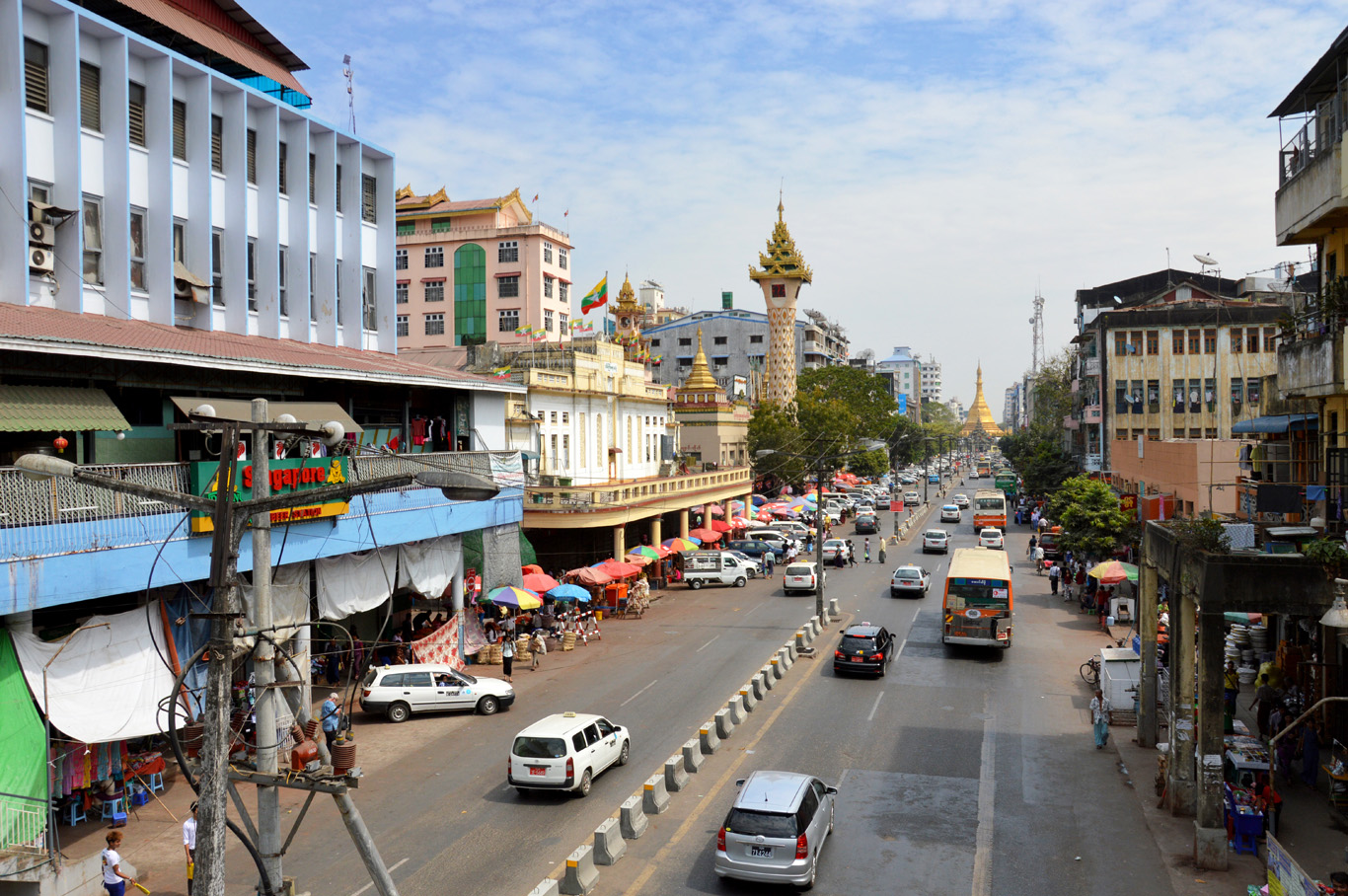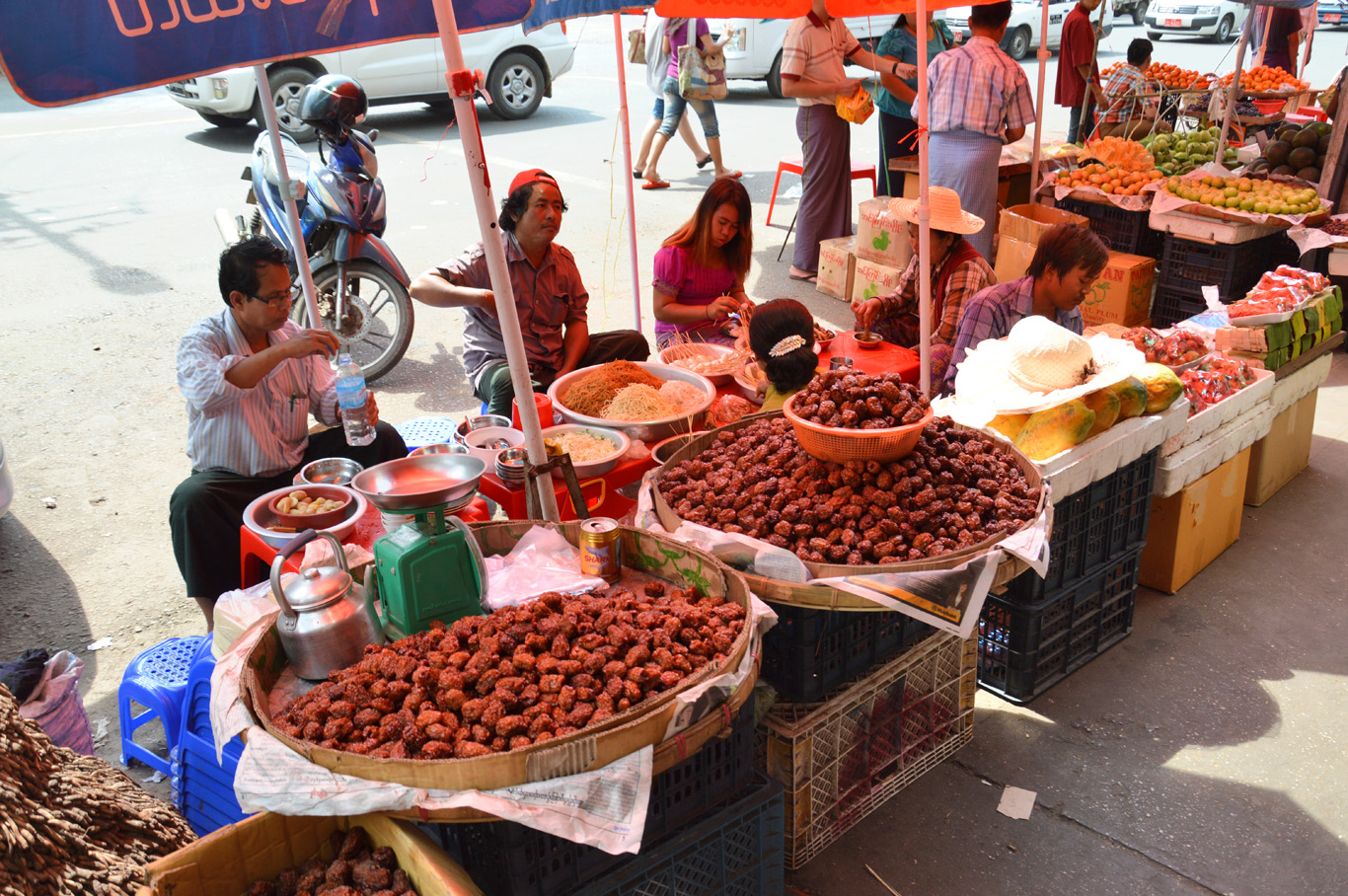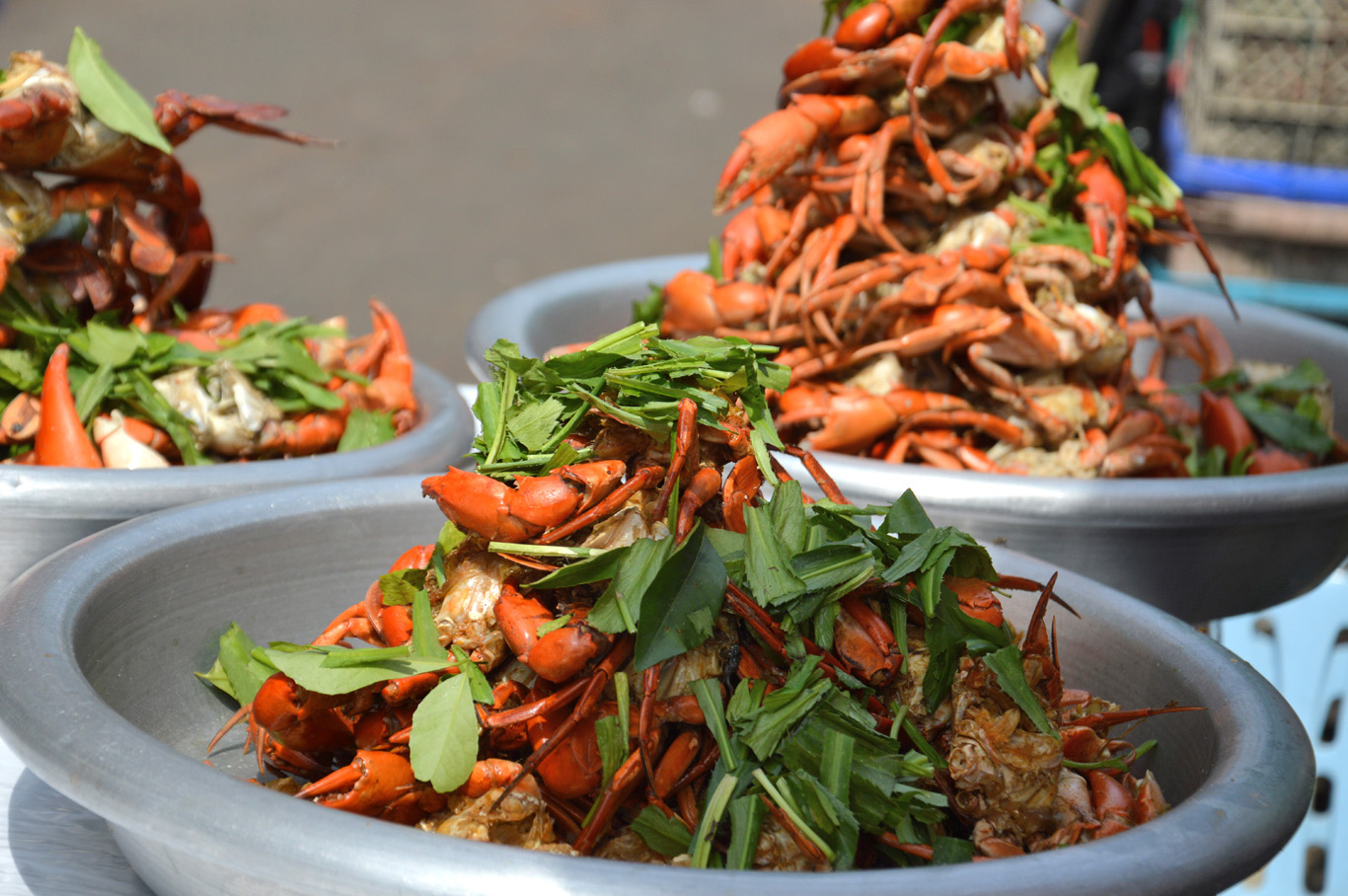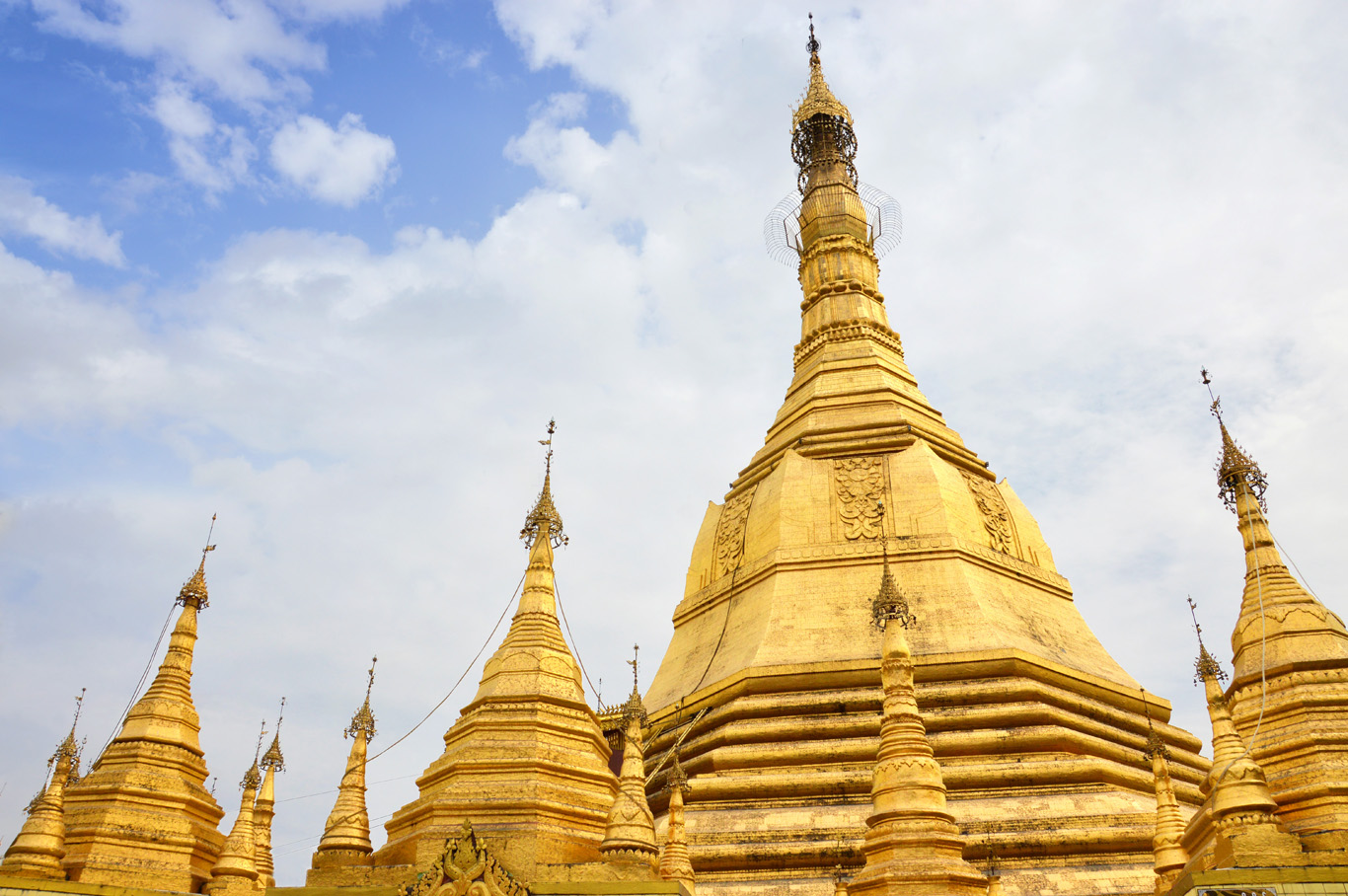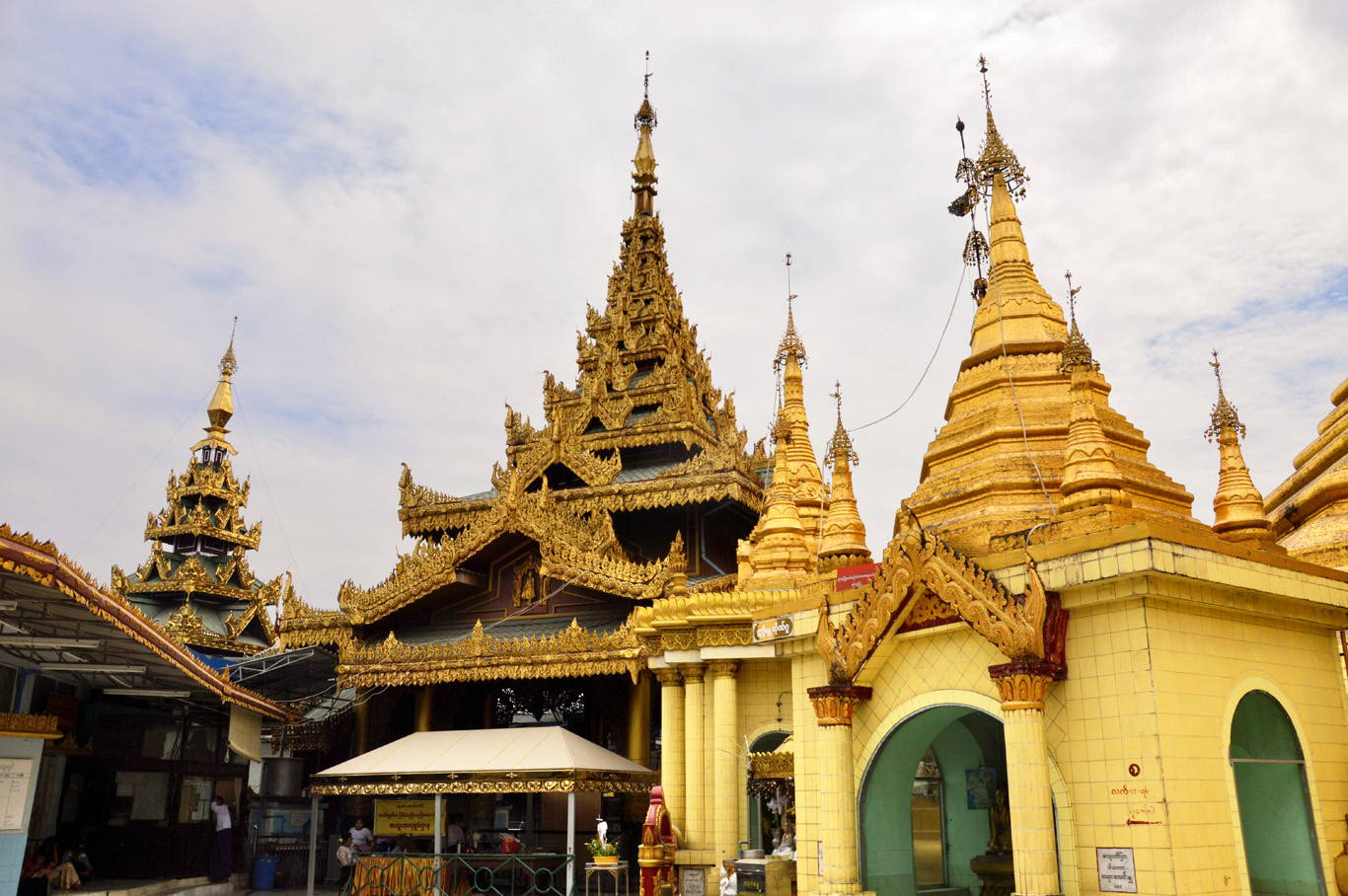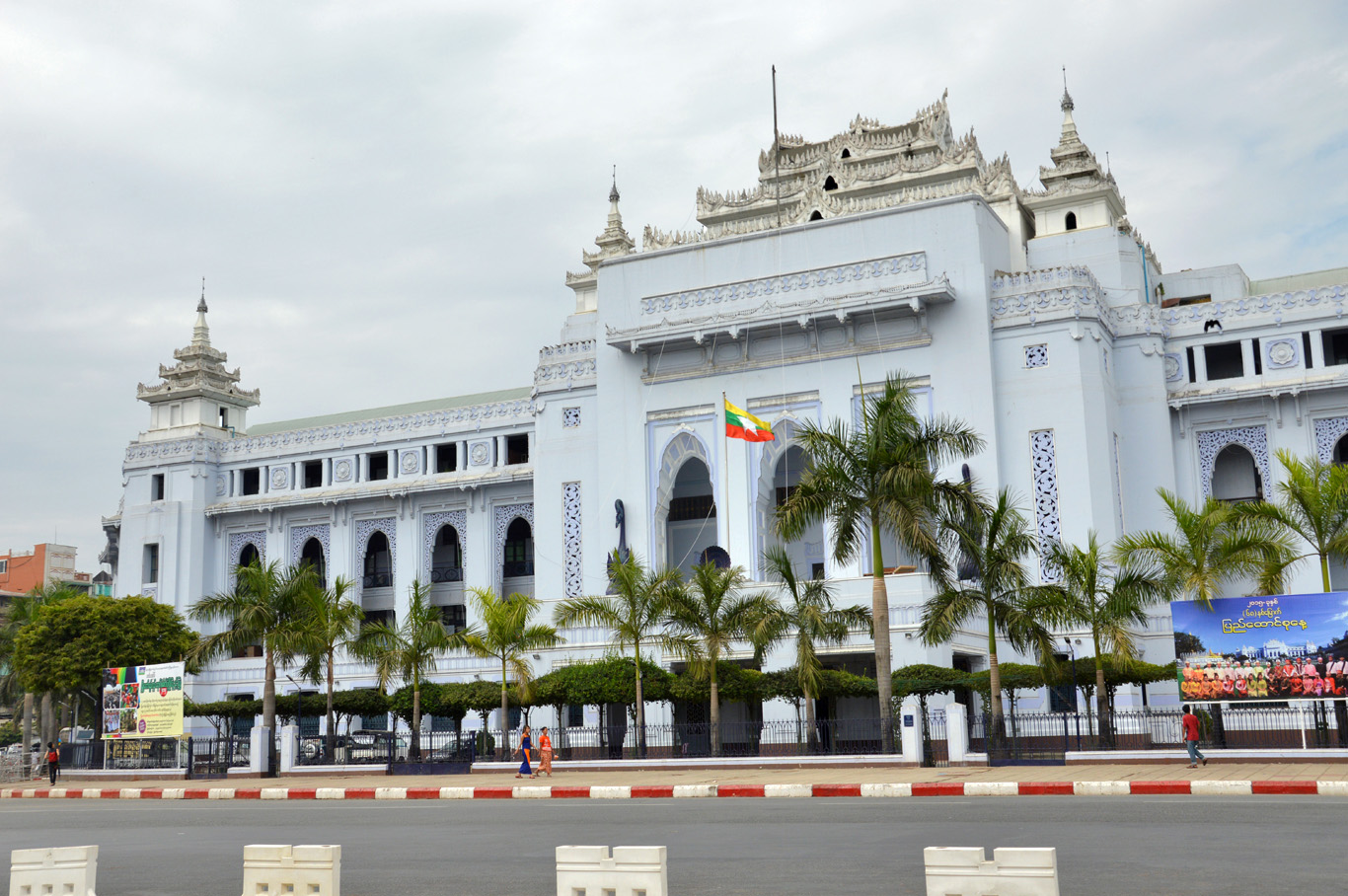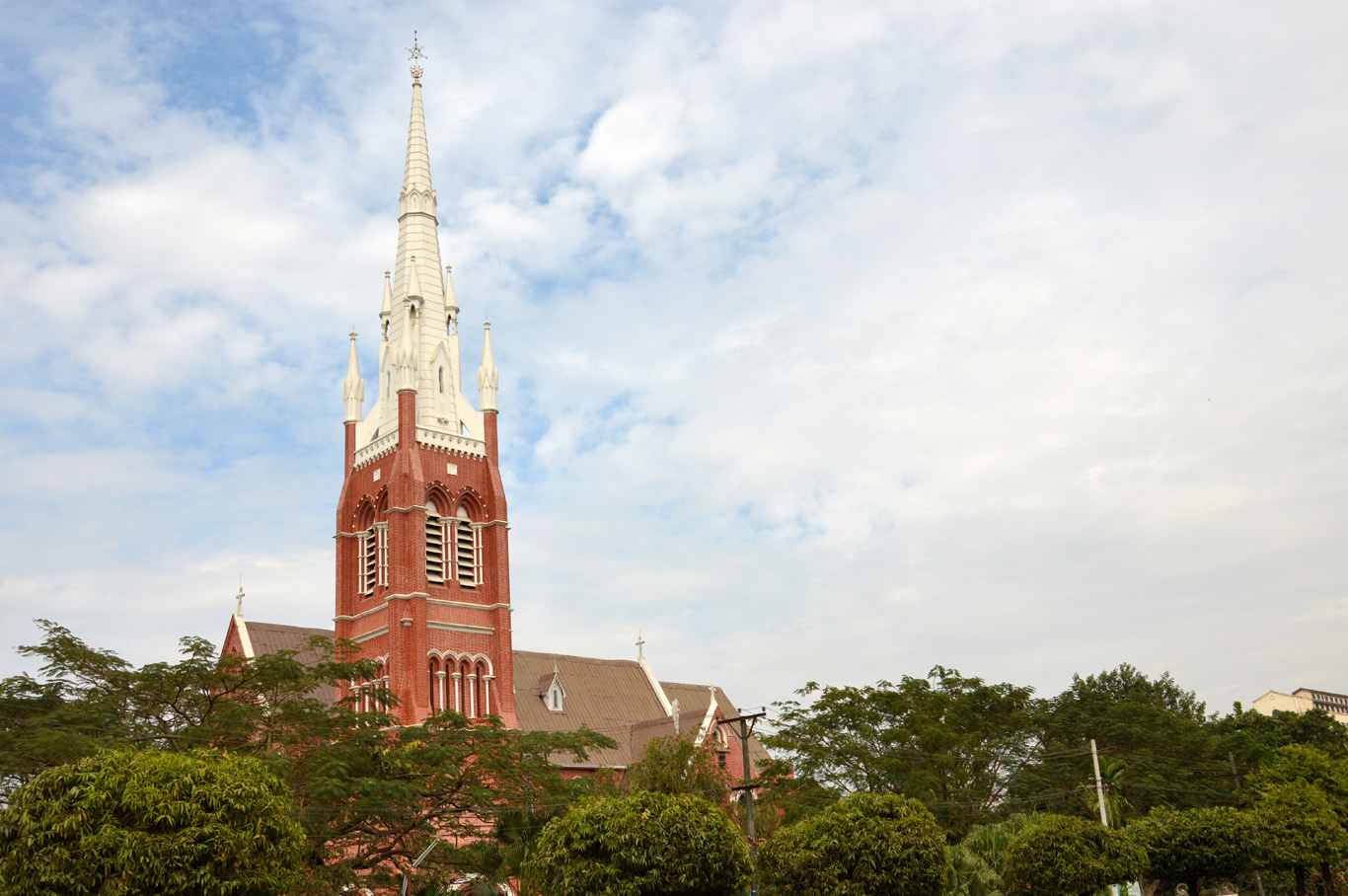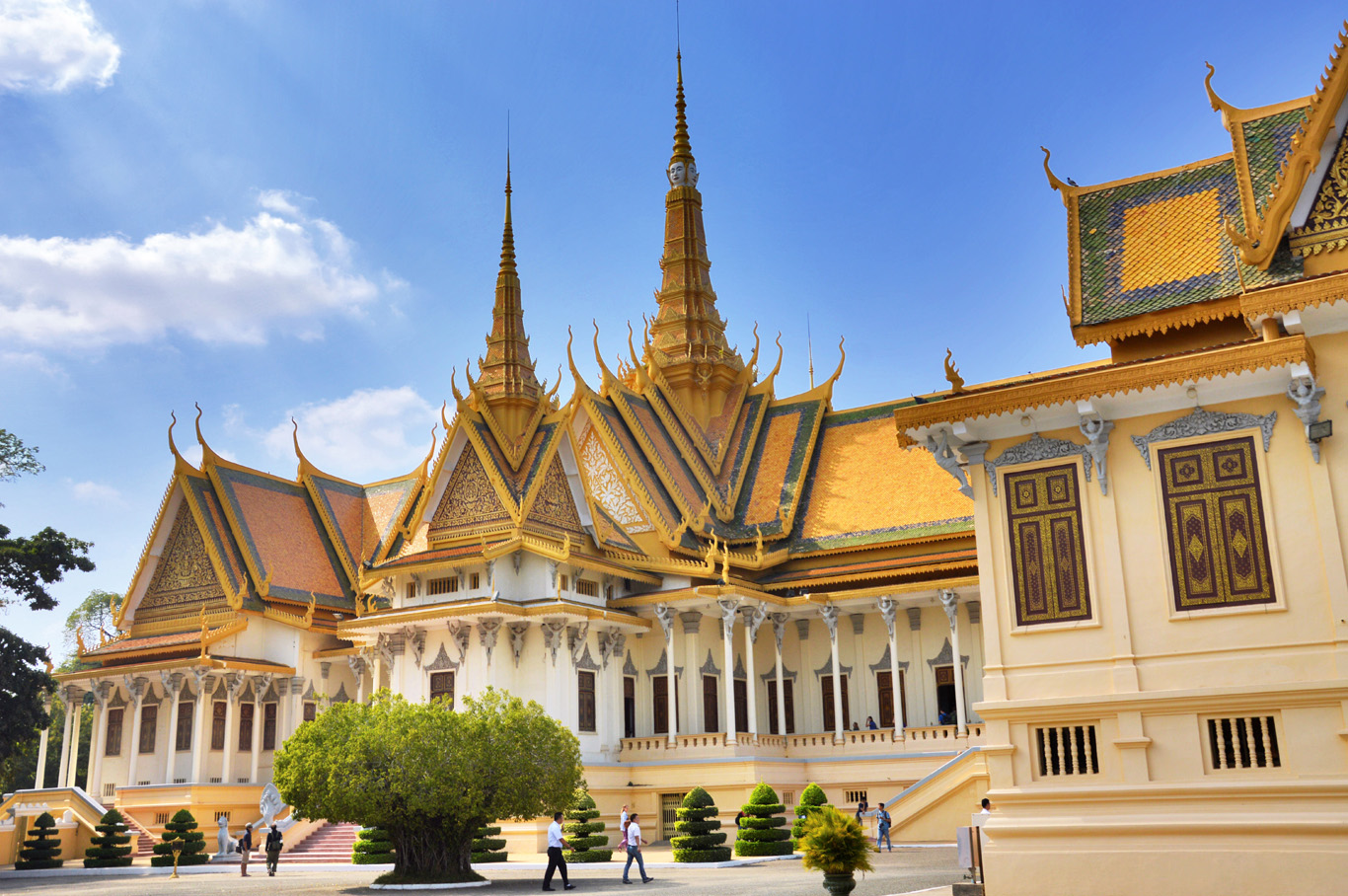Yangon (or Rangoon), Myanmar's former capital is still the largest city in the country and important economic as well as cultural center. Comparing to Bagan, Mandalay or the rest of Myanmar, Yangon seems to be a really modern, culturally diverse metropolis with over 5 million inhabitants. You'll find Burmese, British and Chinese influences at every corner. Colonial buildings, pagodas, churches and Chinese markets are strewn around the center. Although the city is huge, you'll be able to see a lot in just one day - the most impressive monuments and sights (like Shwedagon Pagoda or Sule Pagoda) are within walking distance from one another.
Getting to Yangon
Most of travelers usually skip Yangon and instead go straight to Mandalay - the city which has the more "old Burmese" style and is the gateway to the famous ancient site with thousands of temples - Bagan (I've described it here). I came to Yangon by overnight bus from Bagan - you can also choose to travel by train which is supposedly a real adventure. I was warned, however, that it's totally unreliable so me and my friends decided to opt for the bus. The fare was around 15 EUR (16.50 USD). It was one of the most comfortable buses ever. It had only 3 inclinable seats per row - big, soft and comfy. Strangely, the buses for tourists in Asia are really nice, contrary to some opinions on trip advisor etc. - people warning not to use the overnight buses due to road conditions. Luckily, nothing happened during our journey - and it was way more pleasant than traveling on an ordinary coach in Europe!
What to See in Yangon
Local markets
Apart from the common in Asia wire tangles everywhere, Yangon seemed pretty well organized with comparison to other cities in the region. Even the messy markets were pretty nice, at least along Sule Pagoda Road - where we started our waking tour. You can get basically everything from one of the colorful stands decorated with Chinese lamps: fresh fruit and vegetables, local sweets, candies and delicacies, all varieties of seafood as well as manufactured goods, mobile phones, camera, TV sets etc...
Although it's less common in Yangon than in the rest of the country - don't be surprised if you see someone spitting out red liquid - it's betel nut - popular stimulant in Myanmar (just like alcohol or cigarettes). I've written more about it in the post about the trip to the Golden Rock Pagoda.
Mixed architecture
The architecture in Yangon is a chaotic mix consisting of modern, glass skyscrapers, colonial crumbling buildings, Chinese influences, Christian churches and Burmese pagodas. You'll notice all that just by walking along the Sule Pagoda Road - right behind the Sule Pagoda, there's a square with the Yangon City Hall, Immanuel Baptist Church on one side and high rise skyscrapers on the other. Not far from there, on the way to the most famous Shwegadon Pagoda, in Bo Gyoke Road you'll see Holy Trinity Catholic Church.
Sule Pagoda
Sule Pagoda is located on the roundabout in the street bearing the same name - Sule Pagoda Road. You can spot it from afar while walking towards it. Note, that there is an entry fee for foreigners - 2 USD per person. Sule Pagoda (dating back to around 500 BC) is quite small, and although nice, it doesn't have that wow factor - compering to other temples you're about to see.
According to the legend, it was erected on the site which had been the home of Sulatara - a powerful spirit (nat) who helped to identify the site where sacred relics had been buried by previous Buddhas. Thanks to this, the king of nats was able to create a temple for the Buddha's sacred hair which must have been built on the site where previous relics had been placed.
The Sule Pagoda site is also an important political center in Myanmar - 1988 uprising and 2007 revolution took place here.
Yangon - Sule Pagoda Road
Local market
Local market
Seafood at the local market - Sule Pagoda Road
Sule Pagoda
Sule Pagoda
Sule Pagoda Roundabout
Sule Pagoda
Modern Yangon
City Hall
Immanuel Baptist Church
Modern Yangon
Skyscrapers in Yangon
Crumbling colonial era building
Holy Trinity Catholic Church
Maha Wizaya Pagoda
Following Sule Pagoda Road, turning left into Bo Gyoke Road and then right at the Holy Trinity Catholic Church you'll end up in Shwegadon Pagoda Road. Soon, you'll be able to see the most popular tourist destination of Yangon - Shwegadon Pagoda itself. But before you get there, visit Maha Wizaya Pagoda - beautiful temple, more local and much more quiet than Shwegadon, surrounded by trees and lakes.
Comparing to all the other pagodas, Maha Wizaya seems to be brand new - completed as late as 1980. It houses the sacred relics offered by the King of Nepal. Entry fee is 200 MMK which you can consider nearly free (10 cents).
Shwegadon Pagoda
Shwegadon Pagoda is located right beside Maha Wizaya Pagoda. The whole site is quite large, consisting of passages, arches, local markets and the temple area itself. It's one of the main landmarks not only of Yangon but of Myanmar. According to most historians, it was completed in the 6th century (although, according to the legend, it is more than 2600 years old - and you'll find this date on the leaflets) and is the most sacred Buddhist temple in Myanmar - it contains the relics of the four previous Buddhas of the present kalpa (period of time between creation and recreation of the universe).
The legend has it that around 600 BC two brothers from Myanmar - Tapussa and Bhallika received eight strands of hair from the enlightened Guatama Buddha of India as a gift for offering him honey cakes. The hair was to be enshrined later in the native city of the two brothers - Okkalapa which is now Yangon. Thus Shwegadon Pagoda was erected to contain the sacred relics. Originally, it was only around 20 m (66 ft.) tall, but from the 14th century on, it was rebuilt and damaged by the earthquakes several times and today it's nearly 100 m (330 ft.) tall.
The whole temple area consists of thousands of statues, sculptures and smaller stupas lavishly decorated with gold, diamonds and other gems. You will receive a detailed leaflet containing all the information and a map of the site upon entering the pagoda.
It is interesting to see the local people taking part in the worship and rituals - lighting candles, pouring water on the statues of gods and bringing offerings - flowers and colorful flags - which is the expression of giving - an important concept in Buddhism.
When I was visiting Shwegadon Pagoda, unfortunately, the main stupa was renovated (as you can see in the photos). Nevertheless, the site, although quite pricey, was very impressive anyway. It's a must when you are in Yangon.
The entry fee is 8000 MMK (8 USD, 6.50 EUR). Opening hours: 4 AM - 10 PM. Remember to wear modest clothing - the arms should be covered as well the knees. If you don't have anything to cover yourself with, or your shorts are just a bit to short, you'll pay for a coat at the entrance - 5 USD.
Kandawgyi Lake and Karaweik Hall
Kandawgyi Lake, surrounded by the zoo, parks and gardens is the area where locals come to have some rest from the busy city center. It's located to the West of Shwegadon Pagoda and it's pretty big in size. Don't be surprised if some young people ask to take a photo with you - Myanmar with the exception of Bagan is still not that touristy - sometimes you may feel like a celebrity!
On the other side of the lake there is the Karaweik Hall - the palace in the shape of a barge pulled by two golden birds - it's a beautiful site, however it's quite a long walk from the Shwegadon Pagoda as you have to follow the curvy shore of the lake.
Maha Wizaya Pagoda
Maha Wizaya Pagoda
At the temple
Colonial building near Shwegadon Pagoda
Shwegadon Pagoda
Shwegadon Pagoda
Inside the passage
Shwegadon Pagoda
Shwegadon Pagoda
Woman performing religious rites
Local people at Shwegadon Pagoda
Karaweik Hall
Kandawgyi Lake
Outside Yangon
Golden Rock Pagoda
Golden Rock Pagoda (Kyaiktiyo) is also a famous landmark of Myanmar but surprisingly, you won't find many western tourists there. It's located around 200 km (125 miles) from Yangon. You can get there either by a private tour which can be expensive or, if you want to experience the real Myanmar - by using crazy Burmese public transport. All this might get tricky so if you're planning to see the pagoda, make sure you'll read my post about the trip to Golden Rock Pagoda from Yangon.
If you liked this article, you can also download it via the GPSmyCity app - you will be able to gain access to the guide, which will direct you to all the attractions described above, even if you're offline. Download it here.
Related Posts
Copying without permission is not allowed. If you wish to use any of the site's content (photos or text) or work with us, please contact us.
We welcome questions, advice, support or criticism. However, spam comments will be removed.


